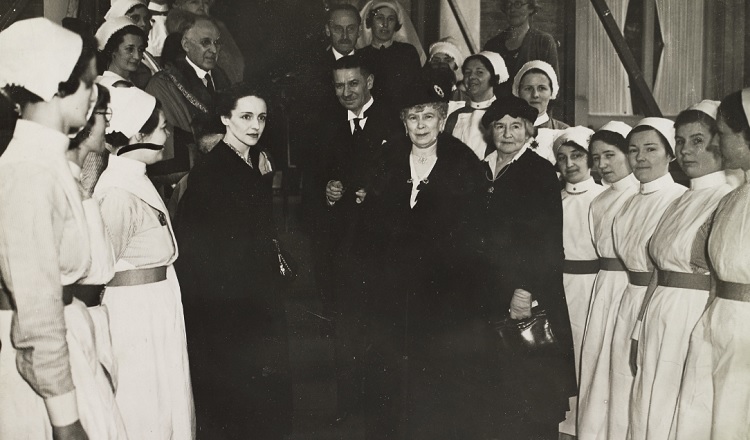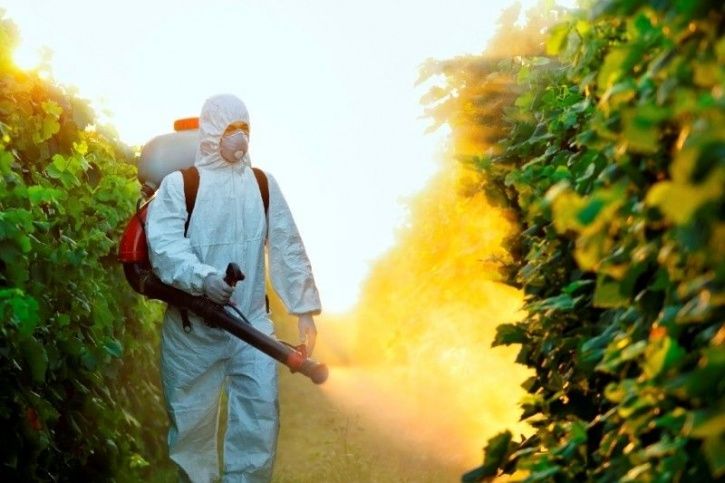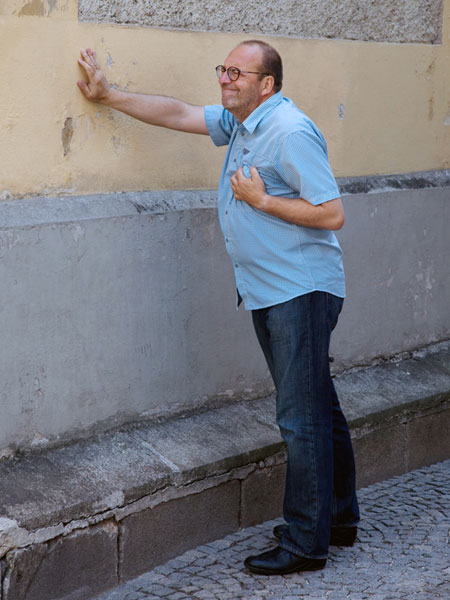INTRODUCTION
The "sepsis bundle" has been central to the implementation of the Surviving Sepsis Campaign (SSC) from the first publication of its evidence-based guidelines in 2004 through subsequent editions (1-6). Developed separately from the guidelines pub- lication by the SSC, the bundles have been the cornerstone of sepsis quality improvement since 2005 (7-11). As noted when they were introduced, the bundle elements were designed to be updated as indicated by new evidence and have evolved accordingly. In response to the publication of "Surviving Sepsis Campaign: International Guidelines for Management of Sepsis and Septic Shock: 2016" (12, 13), a revised "hour- 1 bundle" has been developed and is presented below (Fig. 1). The compelling nature of the evidence in the literature, which has demonstrated an association between compliance with bundles and improved survival in patients with sepsis and septic shock, led to the adoption of the SSC measures by the National Quality Forum (NQF) and subsequently both by the New York State (NYS) Department of Health (14) and the Centers for Medicare and Medicaid Services (CMS) ( 15) in the USA for mandated public reporting. The important relation- ship between the bundles and survival was confirmed in a pub- lication from this NYS initiative (16). Paramount in the management of patients with sep- sis is the concept that sepsis is a medical emergency. As with polytrauma, acute myocardial infarction, and stroke, early identification and appropriate immediate management in the initial hours after development of sepsis improves outcomes (7-11, 14, 16-21). The guidelines state that these patients need urgent assessment and treatment, including initial fluid resus- citation while pursuing source control, obtaining further Iab- oratory results, and attaining more precise measurements of hemodynamic status. A guiding principle is that these complex patients need a detailed initial assessment and then ongoing re-evaluation of their response to treatment. The elements of the 2018 bundle, intended to be initiated within the first hour, are listed in Table I and presented in the following. Consis- tent with previous iterations of the SSC sepsis bundles, "time zero" or "time of presentation" is defined as the time of triage in the emergency department or, if referred from another care location, from the earliest chart annotation consistent with all eIements of sepsis (formerly severe sepsis) or septic shock ascertained through chart review. Because this new bundle is based on the 2016 Guidelines publication,the guidelines them- selves should be referred to for further discussion and evidence related to each element and to sepsis management as a whole.
HOUR-1 BUNDLE
The most important change in the revision of the SSC bun- dles is that the 3-h and 6-h bundles have been combined into a single "hour-l bundle" with the explicit intention of begin- ning resuscitation and management immediateJy. We believe this reflects the clinical reality at the bedside of these seriously ill patients with sepsis and septic shock-that clinicians begin treatment immediately, especially in patients with hypoten- sion, rather than waiting or extending resuscitation measures over a longer period. More than 1 hour may be required for resuscitation to be completed, but initiation of resuscitation and treatment, such as obtaining blood for measuring lactate and blood cultures, administration of fluids and antibiotics, and in the case of life-threatening hypotension, initiation of vasopressor therapy, are all begun immediately.It is also impor- tant to note that there are no published studies that have evalu- ated the efIicacy in important subgroups,including burns and immunocompromised patients. This knowledge gap needs to be addressed in future studies specifically targeting these sub- groups. The elements inCILided in the revised bundle are taken from the Surviving Sepsis Campaign Guidelines, and the level of evidence in support of each element can be seen in Table 1 (12, 13). We believe the new bundle is an accurate reflection of actual clinical care. Measure Lactate Level While serum lactate is not a direct measure of tissue perfu- sion (22), it can serve as a surrogate, as increases may repre- sent tissue hypoxia, accelerated aerobic glycolysis driven by excess beta-adrenergic stimulation, or other causes associated with worse outcomes ( 23). Randomized controlled trials have demonstrated a significant reduction in mortality with lactate- guided resuscitation (24-28). If initial lactate is elevated ( 2mmolL), it should be remeasured within 2-4h to guide resuscitation to normalize lactate in patients with elevated lactate levels as a marker of tissue hypoperfusion (24). Obtain Blood Cultures
Prior to Antibiotics Sterilization of cultures can occur within minutes of the first dose of an appropriate antimicrobial (29, 30), so must be obtained before antibiotic administration cultures to opti- mize the identification of pathogens and improve outcomes (31, 32). Appropriate blood cultures include at least two sets (aerobic and anaerobic). Administration of appropriate anti- biotic therapy should not be delayed in order to obtain blood cultures.
Administer Broad- Spectrum Antibiotics Empiric broad-spectrum therapy with one or more intravenous antimicrobials to cover alI likely pathogens should be started immediately (21) for patients presenting with sepsis septic shock. Empiric antimicrobial therapy should be narrowed once pathogen identification and sensitivities are stablished, or discontinued if a decision is made that the patient does not have infection. The link between early administration of antibiotics for sus- pected infection and antibiotic stewardship remams an essen- tial aspect of high-quality sepsis management. If infection is subsequently proven not to exist, then antimicrobials should be discontinued.
Administer IV Fluid
Early effective fluid resuscitation is crucial for the stabilization of sepsis-induced tissue hypoperfusion or septic shock. Given the urgent nature of this medicaI emergency, initial fluid resuscita- tion should begin immediately upon recognizing a patient with sepsis andor hypotension and elevated lactate, and compIeted within 3 hours of recognition. The guidelines recommend this should comprise a minimum of 30mLkg of intravenous crystalloid fluid. Although little literature includes controlled data to support this voIume, recent interventional studies have described this as usualpractice in the early stages of resuscitation, and observational evidence is supportive (7, 8). The absence of any clear benefit following the administration of colloid com- pared with crystalIoid solutions in the combined subgroups of sepsis, in conjunction with the expense of albumin, supports a strong recommendation for the use of crystalloid solutions in the initial resuscitation of patients with sepsis and septic shock. Because some evidence indicates that a sustained positive fluid balance during ICU stay is harmful (33-37), fluid administra- tion beyond initial resuscitation requires careful assessment of the likelihood that the patient remains fluid responsive.
Apply Vasopressors
Urgent restoration of an adequate perfusion pressure to the vital organs is a key part of resuscitation. This should not be delayed. If blood pressure is not restored after initial fluid resuscitation, then vasopressors should be commenced within the first hour to achieve mean arterial pressure (MAP) of 65 mm Hg. The physiologic effects of vasopressors and com- bined inotropevasopressor selection in septic shock are out- lined in a large number of literature reviews (38-47).
Saturday, September 29, 2018
Friday, September 28, 2018
Transfusion Reaction
Transfusion Reaction: Nursing Interventions
1. Stop the transfusion.
2. Change the intravenous (IV) tubing down to the IV site
and keep the IV line open with normal saline.
3. Notify the health care provider (HCP) and blood bank.
4. Stay with the client, observing signs and symptoms and monitoring vital signs as often as every 5 minutes.
5. Prepare to administer emergency medications as prescribed.
6. Obtain a urine specimen for laboratory studies (perform any other laboratory studies as prescribed).
7. Return blood bag, tubing, attached labels, and transfusion record to the blood bank.
8. Document the occurrence, actions taken, and the client’s response.
If the client exhibits signs of a transfusion reaction, the
nurse immediately stops the transfusion and changes the
IV tubing down to the IV site to prevent the entrance of addi-
tional blood solution into the client. Normal saline solution
is hung and infused to keep the IV line open in the event that
emergencymedications need to be administered. The HCP is
notified and the nurse also notifies the blood bank of the
occurrence. The nurse stays with the client and monitors
the client closely while other personnel obtain needed sup-
plies to treat the client. As prescribed by the HCP, the nurse
administers emergency medications such as antihistamines,
vasopressors, fluids, and corticosteroids. The nurse then
obtains a urine specimen for laboratorystudies and anyother
laboratorystudies as prescribed to check for free hemoglobin
indicating that red blood cells were hemolyzed. The blood
bag, tubing, attached labels, and transfusion record are
returned to the blood bank so that the blood bank can check
the items to determine the reason that the reaction occurred.
Finally the nurse documents the occurrence, actions taken,and the client’s response.
Reference
Ignatavicius, Workman (2016), pp. 824-825.
1. Stop the transfusion.
2. Change the intravenous (IV) tubing down to the IV site
and keep the IV line open with normal saline.
3. Notify the health care provider (HCP) and blood bank.
4. Stay with the client, observing signs and symptoms and monitoring vital signs as often as every 5 minutes.
5. Prepare to administer emergency medications as prescribed.
6. Obtain a urine specimen for laboratory studies (perform any other laboratory studies as prescribed).
7. Return blood bag, tubing, attached labels, and transfusion record to the blood bank.
8. Document the occurrence, actions taken, and the client’s response.
If the client exhibits signs of a transfusion reaction, the
nurse immediately stops the transfusion and changes the
IV tubing down to the IV site to prevent the entrance of addi-
tional blood solution into the client. Normal saline solution
is hung and infused to keep the IV line open in the event that
emergencymedications need to be administered. The HCP is
notified and the nurse also notifies the blood bank of the
occurrence. The nurse stays with the client and monitors
the client closely while other personnel obtain needed sup-
plies to treat the client. As prescribed by the HCP, the nurse
administers emergency medications such as antihistamines,
vasopressors, fluids, and corticosteroids. The nurse then
obtains a urine specimen for laboratorystudies and anyother
laboratorystudies as prescribed to check for free hemoglobin
indicating that red blood cells were hemolyzed. The blood
bag, tubing, attached labels, and transfusion record are
returned to the blood bank so that the blood bank can check
the items to determine the reason that the reaction occurred.
Finally the nurse documents the occurrence, actions taken,and the client’s response.
Reference
Ignatavicius, Workman (2016), pp. 824-825.
Safe Blood Transfusion
General Precautions
A large volume of refrigerated blood infused rapidly through a
central venous catheter into the ventricle of the heart can cause cardiac dysrhythmias.
No solution other than normal saline should be added to blood
components.
Medications are never added to blood components or piggy-backed into a blood transfusion.
To avoid the risk of septicemia, infusions (1 unit) should not
exceed the prescribed time for administration (2 to 4 hours
for packed red blood cells); follow evidence-based practice Guidelines and agency procedure.
The blood administration set should be changed with each unit
of blood, or according to agency policy, to reduce the risk of
septicemia.
Check the blood bag for the date of expiration; components
expire at midnight on the day marked on the bag unless oth-
erwise specified.
Inspect the blood bag for leaks, abnormal color, clots, and
bubbles.
Blood must be administered as soon as possible (within 20 to
30 minutes) after being received from the blood bank, because
this is the maximal allowable time out of monitored storage.
Never refrigerate blood in refrigerators other than those used in
blood banks; if the blood is not administered within 20 to
30 minutes, return it to the blood bank.
The recommended rate of infusion varies with the blood com-
ponent being transfused and depends on the client’s condi-
tion; generally blood is infused as quickly as the client’s
condition allows.
Components containing few red blood cells (RBCs) and plate-
lets may be infused rapidly, but caution should be taken
to avoid circulatory overload.
The nurse should measure vital signs and assess lung sounds
before the transfusion and again after the first 15 minutes
and every 30 minutes to 1 hour (per agency policy) until
1 hour after the transfusion is completed.
Client Assessment
Assess for any cultural or religious beliefs regarding blood
transfusions.
A Jehovah’s Witness cannot receive blood or blood products;
this group believes that receiving a blood transfusion has
eternal consequences.
Ensure that an informed consent has been obtained.
Explain the procedure to the client and determine whether the
client has ever received a blood transfusion or experienced
any previous reactions to blood transfusions.
Check the client’s vital signs; assess renal, circulatory, and
respiratory status and the client’s ability to tolerate intrave-
nously administered fluids.
If the client’s temperature is elevated, notify the health care pro-
vider (HCP) before beginning the transfusion; a fever maybe
a cause for delaying the transfusion in addition to masking a
possible symptom of an acute transfusion reaction.
Blood Bank Precautions
Blood will be released from the blood bank only to personnel
specified by agency policy.
The name and identification number of the intended recipient
must be provided to the blood bank, and a documented
permanent record of this information must be maintained.
Blood should be transported from the blood bank to only1client
at a time to prevent blood delivery to the wrong client.
Only 1 unit of blood should be transported at a time, even if the
client is prescribed to have more than 1 unit transfused.
Client Identity and Compatibility
Check the HCP’s prescription for the administration of the
blood product.
The most critical phase of the transfusion is confirming product
compatibility and verifying client identity.
Universal barcode systems for blood transfusions should be
used to confirm product compatibility, client identity, and
expiration.
Two licensed nurses (follow agency policy) need to check the
HCP’s prescription, the client’s identity, and the client’s
identification band or bracelet and number, verifying that
the name and number are identical to those on the blood
component tag.
At the bedside, the nurse asks the client to state his or her name,
and the nurse compares the name with the name on the
identification band or bracelet.
The nurse checks the blood bag tag, label, and blood requi-
sition form to ensure that ABO and Rh types are compat-
ible. The nurse uses the barcode scanning system per
agency policy.
If the nurse notes any inconsistencies when verifying client
identity and compatibility, the nurse notifies the blood bank
immediately.
A large volume of refrigerated blood infused rapidly through a
central venous catheter into the ventricle of the heart can cause cardiac dysrhythmias.
No solution other than normal saline should be added to blood
components.
Medications are never added to blood components or piggy-backed into a blood transfusion.
To avoid the risk of septicemia, infusions (1 unit) should not
exceed the prescribed time for administration (2 to 4 hours
for packed red blood cells); follow evidence-based practice Guidelines and agency procedure.
The blood administration set should be changed with each unit
of blood, or according to agency policy, to reduce the risk of
septicemia.
Check the blood bag for the date of expiration; components
expire at midnight on the day marked on the bag unless oth-
erwise specified.
Inspect the blood bag for leaks, abnormal color, clots, and
bubbles.
Blood must be administered as soon as possible (within 20 to
30 minutes) after being received from the blood bank, because
this is the maximal allowable time out of monitored storage.
Never refrigerate blood in refrigerators other than those used in
blood banks; if the blood is not administered within 20 to
30 minutes, return it to the blood bank.
The recommended rate of infusion varies with the blood com-
ponent being transfused and depends on the client’s condi-
tion; generally blood is infused as quickly as the client’s
condition allows.
Components containing few red blood cells (RBCs) and plate-
lets may be infused rapidly, but caution should be taken
to avoid circulatory overload.
The nurse should measure vital signs and assess lung sounds
before the transfusion and again after the first 15 minutes
and every 30 minutes to 1 hour (per agency policy) until
1 hour after the transfusion is completed.
Client Assessment
Assess for any cultural or religious beliefs regarding blood
transfusions.
A Jehovah’s Witness cannot receive blood or blood products;
this group believes that receiving a blood transfusion has
eternal consequences.
Ensure that an informed consent has been obtained.
Explain the procedure to the client and determine whether the
client has ever received a blood transfusion or experienced
any previous reactions to blood transfusions.
Check the client’s vital signs; assess renal, circulatory, and
respiratory status and the client’s ability to tolerate intrave-
nously administered fluids.
If the client’s temperature is elevated, notify the health care pro-
vider (HCP) before beginning the transfusion; a fever maybe
a cause for delaying the transfusion in addition to masking a
possible symptom of an acute transfusion reaction.
Blood Bank Precautions
Blood will be released from the blood bank only to personnel
specified by agency policy.
The name and identification number of the intended recipient
must be provided to the blood bank, and a documented
permanent record of this information must be maintained.
Blood should be transported from the blood bank to only1client
at a time to prevent blood delivery to the wrong client.
Only 1 unit of blood should be transported at a time, even if the
client is prescribed to have more than 1 unit transfused.
Client Identity and Compatibility
Check the HCP’s prescription for the administration of the
blood product.
The most critical phase of the transfusion is confirming product
compatibility and verifying client identity.
Universal barcode systems for blood transfusions should be
used to confirm product compatibility, client identity, and
expiration.
Two licensed nurses (follow agency policy) need to check the
HCP’s prescription, the client’s identity, and the client’s
identification band or bracelet and number, verifying that
the name and number are identical to those on the blood
component tag.
At the bedside, the nurse asks the client to state his or her name,
and the nurse compares the name with the name on the
identification band or bracelet.
The nurse checks the blood bag tag, label, and blood requi-
sition form to ensure that ABO and Rh types are compat-
ible. The nurse uses the barcode scanning system per
agency policy.
If the nurse notes any inconsistencies when verifying client
identity and compatibility, the nurse notifies the blood bank
immediately.
Nurses
Being a nurse means you will never be bored, you will always be frustrated, you will be surrounded by challenges, so much to do and so little time. You will carry immense responsibility and very little authority. You will step into people's lives and you will make a difference. Some will bless you, some will curse you. You will see people at their worst and at their best. You will never cease to be amazed at people's capacity for love, courage, and endurance. You will see life begin and end. You will experience resounding triumphs & devastating failures. You will cry a lot, you will laugh a lot. You will know what it is to be human, and to be humane.
Saturday, August 18, 2018
Pray and Help For Kerala .
This is a map of all available resources across #Kerala . Shelters, Medicine, Food, Transportation, Rescue etc etc Please keep sharing.
Click here 👇👇
Navigation for Services
Google has launched in partnership with the government to locate those who need rescue , please share this link or fill it for someone you know needs rescue.
👇👇👇
Person Finder
Pls use this link.. this will help team to do better.
https://keralarescue.in/
Click here to Donate
Click here 👇👇
Navigation for Services
Google has launched in partnership with the government to locate those who need rescue , please share this link or fill it for someone you know needs rescue.
👇👇👇
Person Finder
Pls use this link.. this will help team to do better.
https://keralarescue.in/
Click here to Donate
Friday, August 10, 2018
Nurses Vacancy sept-2018
HMC QATAR NURSING INTERVIEW WORKSHOP At BANGALORE September first week 2018.Large number of vacancy.
VACANCY -SPECIALTY
Ambulatory - OPD
Ambulatory - ER
Cardiac - ICU
Cardiac - Ward
Communicable disease - Ward
Communicable disease - Inpatient
Medical Critical Care
Surgical Critical Care
Pediatric Critical Care
Cardiac Critical Care
Obstretic / Gynecology Critical Care
NICU Critical Care
Oncology Critical Care
Dialysis
Emergency
Endoscopy
Home health
Imaging
Medical - Ward
Medical - ICU
NICU
Obstetrics - Ward
Obstetrics - OPD
Obstetrics - OR
Oncology
Operating – OR
Operating PACU
Paediatric - Ward
Paediatric - ICU
Rehabilitation - Ward
Rehabilitation
Psychiatric - Community
Psychiatric - Ward
Surgical - Ward
Surgical - ICU
Wounds - Ward
Wounds – OPD
QUALIFICATION : Bsc nursing , after registration 3+ years work experience , last two years in applied specialty only
Required documents
1. HMC Application Form
2. Detailed CV in word format
3. Bsc Degree Certificate
4. Transcript/Marksheet
5. Registration License
6. Experience Certificate
7. BLS/DataFlow/Qatar Prometric ( if available )
8. Valid Passport Copy
9. Photograph
10. Any Additional Documents ( Please mention Document type in file name).
Interested and relevant applicants may send your updated cv and all the documents above mentioned.
JERRY VARGHESE GLOBAL.
Ms. Shyni Sarji
Health care incharge.
e-mail: bangalorehealthcare@jvi-global.com
U May contact #+918041116977.
VACANCY -SPECIALTY
Ambulatory - OPD
Ambulatory - ER
Cardiac - ICU
Cardiac - Ward
Communicable disease - Ward
Communicable disease - Inpatient
Medical Critical Care
Surgical Critical Care
Pediatric Critical Care
Cardiac Critical Care
Obstretic / Gynecology Critical Care
NICU Critical Care
Oncology Critical Care
Dialysis
Emergency
Endoscopy
Home health
Imaging
Medical - Ward
Medical - ICU
NICU
Obstetrics - Ward
Obstetrics - OPD
Obstetrics - OR
Oncology
Operating – OR
Operating PACU
Paediatric - Ward
Paediatric - ICU
Rehabilitation - Ward
Rehabilitation
Psychiatric - Community
Psychiatric - Ward
Surgical - Ward
Surgical - ICU
Wounds - Ward
Wounds – OPD
QUALIFICATION : Bsc nursing , after registration 3+ years work experience , last two years in applied specialty only
Required documents
1. HMC Application Form
2. Detailed CV in word format
3. Bsc Degree Certificate
4. Transcript/Marksheet
5. Registration License
6. Experience Certificate
7. BLS/DataFlow/Qatar Prometric ( if available )
8. Valid Passport Copy
9. Photograph
10. Any Additional Documents ( Please mention Document type in file name).
Interested and relevant applicants may send your updated cv and all the documents above mentioned.
JERRY VARGHESE GLOBAL.
Ms. Shyni Sarji
Health care incharge.
e-mail: bangalorehealthcare@jvi-global.com
U May contact #+918041116977.
Sunday, March 11, 2018
Tips For Staying Healthy As A Nurse
-Tamilnadu Private Nurses Association

Nurses are committed to caring for their patients, but unfortunately many struggle to take care of themselves. In fact, Nurses are more likely to be overweight, have higher levels of stress and get less than the recommended hours of sleep. Delivering health care is a stressful role, both physically and mentally. Therefore, it is imperative you take your own health into consideration.
According to the Occupational Safety and Health Administration, Nurses and health care workers experience the highest rate of non-fatal occupational injuries and illnesses of anysectors, including construction. As mentioned, both your mental and physical health are important. Here are some tips to help you improve your overall health.
Find a work buddy
In any job, especially Nursing, it’s easier to cope with emotional stress when you have a work buddy to help you through tough shifts. You can vent to your friend, share your frustrations and they understand what you're going through. If you haven’t found your best friend at work yet, don’t worry, you will.
Eat well
Most Nurses work in a fast-paced environment and are often short on time, which can lead to relying on fast food that is high in fat, sodium, sugar, and additives. Look for ways to add more lean proteins, fresh fruits, vegetables and whole grains. Try meal prepping for the week.
Meditate or find a quiet space
Try to find peace for at least 10 minutes in a quiet room or in a quiet place outside with no electronic distractions. Ten minutes of quiet is longer than you think, but you'll feel more refreshed afterwards. Just take a moment to focus on breathing and calming positive thoughts to boost you through draining times.
Sleep
You know it's important to get sufficient sleep prior to your shift, but it’s not always easy to get it. Do your best to get your sleep because many bad things happen when you don’t sleep properly. You might overeat, feel unhappy and impatient, your energy levels will slowly deplete, and it’s possible you could make mistakes. For night shift workers who need to sleep during the day, try using ear plugs to drown out noise and face masks to block the light. White noise machines could be helpful too.
Exercise
Some jobs require you to sit for long periods at a computer, so try standing every hour for a few minutes. Walk up and down a flight of stairs, stretch your legs and find workouts tailored for long shifts.
What do you do to stay healthy? We'd love to hear your ideas and tips as they could be helpful to your colleagues. Please comment below!
Contents:
DiversityNursing Blog

FIVE Problems Nurses Face Today
FIVE Problems Nurses Face Today
Here’s an article we’re quite sure you have strong feelings about regarding your work environment. Do you agree or disagree that these problems exist? Are there other issues you experience that we should add to this list? Please make any comments and/or suggestions in our comments section below!
Nursing is a challenging job and issues arise that are out of your control. Some are direct results of communication and interactions amongst Nurses. Below are the 5 biggest problems Nurses face today.
BEING SHORT STAFFED
This can bring professional and personal issues. When a hospital is short-staffed, you’re left with no other option but to take on more shifts, cover for your co-nurses’ absences, and miss out on important life occasions. Your social life can suffer, too.
Short staffing is one of the most common reasons why nurses experience burnout. Nursing is already a stressful job and not having enough time to relax and care for yourself can make you feel more frustrated and unsatisfied with your job.
LONG SHIFTS
Nurses are often required to work more long hours. It can be due to the hospital being short-staffed or management cutting costs. Whichever the reason, Nurses, working longer than they're supposed to, is detrimental. It can affect the quality of care they deliver, and it can also put their health at risk.
When Nurses work extended hours, they aren't resting properly and aren't letting their bodies recover. for example, many Nurses who take extended shifts suffer from chronic back, leg and shoulder pain. Some of them even develop long-term medical conditions, like diabetes and cardiovascular issues.
By not being well-rested, you can suffer from daytime sleepiness, fatigue, and impaired mental function. It can affect your ability to make proper decisions, which can compromise your patients’ safety.
SALARY
The compensations Nurses receive depend on many factors. Aside from specialty, their place of work tends to affect the salary they get, as well. Having a higher degree counts as well. Salary is a common reason why Nurses leave a hospital.
DISCRIMINATION
Nurses eating their young isn’t an entirely new thing. In fact, this has been around for ages.
Being a new Nurse is intimidating and you have to adjust to many new things. Apart from the skills you have to gain, you also have to learn how to cope with how the Nursing system in your hospital works.
Unfortunately, not all veteran Nurses are that welcoming. These attitudes tend to dull the enthusiasm of new Nurses enough to make them question themselves if they made the right career choice. You are all on the same team, strengthen your team by welcoming new Nurses and being a little more patient with them.
JOB HAZARDS
Working in the hospital puts nurses in a lot of work hazards. Take, for example, being exposed to infected body fluids. Apart from that, lifting patients of all sizes can also put your safety at risk. Nurses also have to deal with sharps and needles and running on slippery floors during emergencies.
Nursing can be difficult and we appreciate everything they deal with.
If you have anything to add please comment below!

Saturday, March 10, 2018
Each individual must take note of the three 1/2 minutes.*
*Dear All: Please note this as it's very important for all. Shared by a doctor: For those who get up at night from sleep to urinate or early in the morning.*
*Why is it important? Three 1/2 minutes will greatly reduce the number of sudden deaths.*
*Often this occurs: a person who still looks healthy has died in the night.*
*Often we hear stories of people who say, "Yesterday, I was chatting with him. Why did he suddenly die?*
*The reason is that when you wake up at night to go to the bathroom, it is often done in a rush.*
*Immediately we stand, and the brain lacks blood flow.*
*Why are "Three 1/2 minutes" very important?*
*In the middle of the night, when you are awakened by the urge to urinate for example, the ECG pattern can change.*
*Because in getting up suddenly, the brain will be anaemic and causes heart failure due to lack of blood.*
*You are advised to practice the "Three 1/2 minutes," which are:*
*1. When waking from sleep, lie in bed for the 1st 1/2 minute;*
*2. Sit in bed for the next 1/2 minute;*
*3. Lower your legs, sitting on the edge of the bed for the last half-minute.*
*After three 1/2 minutes, you will not have anaemic brain and heart will not fail, reducing the possibility of a fall and sudden death.*
*Share with family, friends & loved ones.*
*It can occur regardless of age; young or old.*
*Sharing is Caring. If you already know, regard this as a refresher."*
Please try to forward this important Health tip to all your groups, and you/your family also should follow it.
Tamilnadu Private Nurses Association
*Each individual must take note of the three 1/2 minutes.*
*Why is it important? Three 1/2 minutes will greatly reduce the number of sudden deaths.*
*Often this occurs: a person who still looks healthy has died in the night.*
*Often we hear stories of people who say, "Yesterday, I was chatting with him. Why did he suddenly die?*
*The reason is that when you wake up at night to go to the bathroom, it is often done in a rush.*
*Immediately we stand, and the brain lacks blood flow.*
*Why are "Three 1/2 minutes" very important?*
*In the middle of the night, when you are awakened by the urge to urinate for example, the ECG pattern can change.*
*Because in getting up suddenly, the brain will be anaemic and causes heart failure due to lack of blood.*
*You are advised to practice the "Three 1/2 minutes," which are:*
*1. When waking from sleep, lie in bed for the 1st 1/2 minute;*
*2. Sit in bed for the next 1/2 minute;*
*3. Lower your legs, sitting on the edge of the bed for the last half-minute.*
*After three 1/2 minutes, you will not have anaemic brain and heart will not fail, reducing the possibility of a fall and sudden death.*
*Share with family, friends & loved ones.*
*It can occur regardless of age; young or old.*
*Sharing is Caring. If you already know, regard this as a refresher."*
Please try to forward this important Health tip to all your groups, and you/your family also should follow it.
Tamilnadu Private Nurses Association
Tamil Nadu government fixes minimum wages for private nurses
Tamil Nadu government fixes minimum wages for private nurses.......
09th March 2018
CHENNAI: The labour department has fixed the minimum basic pay that private hospitals must pay its nurses following a SC order last year.The department has on March 3 issued a GO and the notification was published in the gazette on Wednesday. However, pay levels fixed by the order is much lower than what SC recommended.
Private nursing homes and hospitals with 25 or lesser beds must now pay a minimum basic of Rs 15,824 to nurses. For other category hospitals, the basic pay are as follows: for 26 to 50-bed hospitals, Rs 15,874; for 51 to 100-bed hospitals, Rs 15,924; for 101 to 150-bed hospitals, Rs 15,974; for 151 to 200-bed hospitals, Rs 16,024; and for hospitals with more than 200 beds, Rs 16,124. The Apex Court in its order last year had recommended a minimum basic pay of Rs 20,000 for nurses in hospitals with less than 50 beds. Also, for hospitals with 50 to 100 beds, the court had said the pay must be 75 percent of what nurses in government hospitals get.
The order was implemented in Kerala after a massive protest. Following this, various nurses associations staged protests across TN.Subsequently, the Government constituted a committee under Deputy Commissioner of Labour for revision of minimum wages. The panel, after conducting various meetings with the employers and employees, submitted a report to the Commissioner of Labour. The report was sent to the government along with the recommendations. After acceptance, the Minimum Wages Act, 1948 was amended.
A Raj, secretary, Global Nurses Association said, earlier we were getting Rs 6,000 as basic salary in most hospitals. Now, though, it was higher than that, its still lesser than recommendations. “Don’t know what were the considerations taken while studying. We will decide on our next step later,” he said.
Friday, March 9, 2018
செவிலியர்களின் உழைப்பை சுரண்டாதே! குறைந்தபட்சம் ரூ 20000/- வழங்க வேண்டும்! கோரிக்கை வைக்கும் MP!
09/03/2018 12:29:07
தமிழக அரசு நிர்ணயித்துள்ள ஊதிய விகிதம் உச்சநீதிமன்றத்தால் பரிந்துரைக்கப்பட்ட ஊதியத்தை விட மிகவும் குறைவாக உள்ளது. குறைந்தபட்ச மாத ஊதியமாக ரூ.20,000 வழங்கப்பட வேண்டும் என பா.ம.க. இளைஞரணித்தலைவர் அன்புமணி ராமதாஸ் இன்று வெளியிட்ட அறிக்கையானது,
உச்சநீதிமன்றத் தீர்ப்பின்படி, தமிழகத்தில் தனியார் மருத்துவமனைகளில் பணியாற்றும் செவிலியர்களுக்கு குறைந்தபட்ச ஊதியமாக ரூ.15,824 நிர்ணயித்து தமிழக அரசின் தொழிலாளர் நலத்துறை அரசாணை வெளியிட்டுள்ளது. இது வரவேற்கத்தக்க நடவடிக்கை என்றாலும் கூட, தமிழக அரசு நிர்ணயித்துள்ள ஊதிய விகிதம் உச்சநீதிமன்றத்தால் பரிந்துரைக்கப்பட்ட ஊதியத்தை விட மிகவும் குறைவாக உள்ளது.இது செவிலியர்களின் மிகப்பெரிய அளவில் உதவியாக இருக்கும் என்பதில் எந்த மாற்றுக்கருத்தும் இல்லை.ஆனால், இது மத்திய அரசால் பரிந்துரைக்கப்பட்ட ஊதியத்தை விட குறைவாகும். செவிலியர் ஊதியம் குறித்த வழக்கை விசாரித்த உச்சநீதிமன்றம், அவர்களின் வாழ்க்கை நிலை குறித்து ஆய்வு செய்யவும், அவர்களுக்கான ஊதிய விகிதங்கள் குறித்து பரிந்துரைக்கவும் வல்லுனர் குழு அமைக்கும்படி மத்திய அரசுக்கு ஆணையிட்டது. அதன்படி அரசு அமைத்த வல்லுனர் குழு 50 படுக்கைகளுக்கு குறைவாக உள்ள மருத்துவமனைகளில் பணியாற்றும் செவிலியர்களுக்கு குறைந்தபட்ச மாத ஊதியமாக ரூ.20,000 வழங்கப்பட வேண்டும். 50 முதல் 100 படுக்கை வரை உள்ள மருத்துவமனைகளின் செவிலியர்களுக்கு அரசு செவிலியருக்கு வழங்கப்படும் ஊதியத்தில் 25% குறைவாகவும், 100 படுக்கைகளுக்கு மேல் உள்ள மருத்துவமனை செவிலியர்களுக்கு 10% குறைவாகவும், 200 படுக்கைகளுக்கு மேல் உள்ள மருத்துவமனைகளின் செவிலியர்களுக்கு அரசு ஊதியத்துக்கு இணையான ஊதியமும் வழங்கப்பட வேண்டும் என பரிந்துரை செய்திருந்தது. இதை ஏற்றுக் கொண்ட மத்திய அரசு, இந்த பரிந்துரையை நிறைவேற்றும்படி மாநில அரசுகளுக்கு 2016-&ஆம் ஆண்டு செப்டம்பரில் மத்திய அரசு ஆணையிட்டிருந்தது.
ஆனால், அனைத்து நிலைகளிலுமே உச்சநீதிமன்ற ஆணைப்படி மத்திய அரசு பரிந்துரைத்த ஊதியத்தை விட மாநில அரசு நிர்ணயித்துள்ள ஊதியம் மிகவும் குறைவாக உள்ளது. மத்திய அரசின் பரிந்துரையை விட குறைந்தபட்சம் 21 விழுக்காடு முதல் அதிகபட்சமாக 50% வரை ஊதிய விதிதம் குறைவாக நிர்ணயிக்கப்பட்டிருக்கிறது. அறப்போராட்டங்களின் மூலமாகவும், சட்டப்போராட்டங்களின் மூலமாகவும் செவிலியர்கள் போராடிப் பெற்ற இவ்வுரிமையை தனியார் மருத்துவமனைகளுக்கு சாதகமாக தமிழக அரசு சிதைத்து விடக் கூடாது.
மருத்துவ சேவைத் துறையில் செவிலியர்களின் பணி மகத்தானது ஆகும். நோயாளிகளை கனிவுடன் கவனித்துக் கொள்வதில் தொடங்கி, அவர்களின் சொந்த சோகங்களை மறைத்து புன்னகையுடன் பணி செய்வது வரை அவர்களின் தியாகங்கள் அளவிட முடியாதவையாகும். அதற்கேற்றவாறு அவர்களுக்கு ஊதியம் வழங்கப்பட வேண்டுமே தவிர, உழைப்பை சுரண்டக்கூடாது.
எனவே, மத்திய அரசு பரிந்துரைத்தவாறு செவிலியர்களுக்கு குறைந்தபட்ச ஊதியமாக ரூ.20,000 வழங்க வேண்டும். 200 படுக்கைகளுக்கு மேல் உள்ள மருத்துவமனைகளின் செவிலியர்களுக்கு அரசு ஊதியத்துக்கு இணையான ஊதியமும் வழங்கப்பட வேண்டும். இதற்கேற்றவாறு அரசாணையில் திருத்தம் செய்வதுடன், அது முழுமையாக செயல்படுத்தப்படுவதையும் அரசு உறுதி செய்ய வேண்டும்.
செவிலியர்களின் மீதான உழைப்புச் சுரண்டல்கள் தனியார் துறையில் மட்டுமின்றி, அரசுத்துறையிலும் ஒழிக்கப்பட வேண்டும். தனியார் துறையில் செவிலியர்களின் உழைப்பு ரூ.6000 ஊதியம் கொடுத்து சுரண்டப்பட்டால், அரசு மருத்துவமனைகளின் ரூ.7000 கொடுத்து சுரண்டப்படுகிறது. இதற்கும் முடிவு காணும் வகையில் அரசுத்துறையில் பணியாற்றும் ஒப்பந்த செவிலியர்கள் அனைவரையும் பணி நிலைப்பு செய்து அவர்களுக்கு காலமுறை ஊதியம் வழங்க தமிழக அரசு நடவடிக்கை மேற்கொள்ள வேண்டும் என அவரது அறிக்கையில் கூறப்பட்டுள்ளது.
மருத்துவ சேவைத் துறையில் செவிலியர்களின் பணி மகத்தானது ஆகும். நோயாளிகளை கனிவுடன் கவனித்துக் கொள்வதில் தொடங்கி, அவர்களின் சொந்த சோகங்களை மறைத்து புன்னகையுடன் பணி செய்வது வரை அவர்களின் தியாகங்கள் அளவிட முடியாதவையாகும். அதற்கேற்றவாறு அவர்களுக்கு ஊதியம் வழங்கப்பட வேண்டுமே தவிர, உழைப்பை சுரண்டக்கூடாது.
எனவே, மத்திய அரசு பரிந்துரைத்தவாறு செவிலியர்களுக்கு குறைந்தபட்ச ஊதியமாக ரூ.20,000 வழங்க வேண்டும். 200 படுக்கைகளுக்கு மேல் உள்ள மருத்துவமனைகளின் செவிலியர்களுக்கு அரசு ஊதியத்துக்கு இணையான ஊதியமும் வழங்கப்பட வேண்டும். இதற்கேற்றவாறு அரசாணையில் திருத்தம் செய்வதுடன், அது முழுமையாக செயல்படுத்தப்படுவதையும் அரசு உறுதி செய்ய வேண்டும்.
செவிலியர்களின் மீதான உழைப்புச் சுரண்டல்கள் தனியார் துறையில் மட்டுமின்றி, அரசுத்துறையிலும் ஒழிக்கப்பட வேண்டும். தனியார் துறையில் செவிலியர்களின் உழைப்பு ரூ.6000 ஊதியம் கொடுத்து சுரண்டப்பட்டால், அரசு மருத்துவமனைகளின் ரூ.7000 கொடுத்து சுரண்டப்படுகிறது. இதற்கும் முடிவு காணும் வகையில் அரசுத்துறையில் பணியாற்றும் ஒப்பந்த செவிலியர்கள் அனைவரையும் பணி நிலைப்பு செய்து அவர்களுக்கு காலமுறை ஊதியம் வழங்க தமிழக அரசு நடவடிக்கை மேற்கொள்ள வேண்டும் என அவரது அறிக்கையில் கூறப்பட்டுள்ளது.
Thursday, March 8, 2018
Celebrating our nurses on International Women’s Day
Celebrating our nurses on International Women’s Day
In honour of International Women’s Day , we look back at the 1930s female-led Marie Curie Hospital and the legacy of care and support from our nursing staff of all genders.
Every year on 8 March, people across the world celebrate the achievements of women and pledge to take action for gender equality. On this day, we are particularly proud that our charity is named for the first woman to win a Nobel Prize and that her discoveries have saved millions of lives.
Our nurses and hospices provide care and support to people living with terminal illness, regardless of gender. But our origins lie in a hospital run for women, by women.

A hospital opens in Hampstead
In 1930, following a public funding appeal, a London building was converted into a 30-bed hospital to be staffed entirely by women. As the focus was on the radiological treatment of women suffering from cancer, Madame Curie took an interest and allowed her name to be used.
The Marie Curie Hospital had facilities for radium and X-ray therapy, as well as research laboratories, and treated hundreds of women each year. An out-patients department was opened in the cellar to enable follow-up care and the building was extended to cope with increasing demand.
Unfortunately, most of the hospital was destroyed by bombing in 1944.
Rising from the rubble
Following the war, plans were made to rebuild the hospital and keep the name of Marie Curie alive in the medical field. Her daughter Eve gave permission for the Marie Curie International Memorial Foundation, which was established in 1948.
Thanks to a fundraising appeal, the first Marie Curie Home for cancer patients was opened in 1952, based in an old National Trust property in Fife. From its earliest days, the foundation helped patients who needed care at home and by the end of the 1950s, Marie Curie home nursing was available in nine UK areas.
A legacy of nursing care
Today, Marie Curie provides care and support for over 40,000 women and men each year who are living with any terminal illness. This wouldn’t be possible without the pioneering medical women of the Marie Curie Hospital, the support of a trailblazing female scientist, and generations of Marie Curie Nurses and supporters of all genders.
Want to achieve something special for International Women’s Day? Help us continue to support people living with terminal illness, and their families
Monday, March 5, 2018
Saturday, March 3, 2018
கறிவேப்பிலையை அப்படியே சாப்பிடுவது ஆரோக்கியம்
கறிவேப்பிலையை அப்படியே சாப்பிடுவது ஆரோக்கியம்

நான்கு மாதங்கள் தொடர்ந்து கறிவேப்பிலையை பச்சையாக சாப்பிட்டால் மந்திர மாற்றங்கள் ஏற்படும்.
பொதுவாக உணவில் நறுமணத்துக்காகவும் சுவைக்காகவும் சேர்க்கப்படும் கறிவேப்பிலையை அனைவரும் அசட்டையாக தூக்கி எறிந்து விடுவோம். ஆனால் அந்த கறிவேப்பிலையை நன்கு கழுவி தினமும் காலையில் வெறும் வயிற்றில் பச்சையாக சாப்பிட்டு வந்தால் என்ன நன்மைகளெல்லாம் கிடைக்கும் என்று தெரியுமா?
கறிவேப்பிலையில் வைட்டமின் ஏ, வைட்டமின் பி, வைட்டமின் பி 2, வைட்டமின் சி, கால்சியம், இரும்புச்சத்து போன்றவை வளமாக நிறைந்துள்ளன. கறிவேப்பிலை முடியின் வளர்ச்சிக்கு நல்லது என்று பலர் சொல்ல கேட்டிருப்போம். ஆனால் அதனை பச்சையாக தினமும் காலையில் சாப்பிடுவதால் கிடைக்கும் நன்மைகள் பற்றி பலருக்கும் தெரிந்திருக்க வாய்ப்பில்லை. தொடர்ந்து 120 நாட்கள் கறிவேப்பிலையை பச்சையாக சாப்பிட்டு வந்தால் உடலில் பல்வேறு நன்மைகள் உண்டாகும்.
காலையில் வெறும் வயிற்றில் 15 கறிவேப்பிலை இலையை உட்கொண்டு வந்தால், வயிற்றைச் சுற்றியுள்ள அதிகப்படியான கொழுப்புகள் கரைந்து, அழகான மற்றும் எடுப்பான இடையைப் பெறலாம். ரத்தச் சோகை உள்ளவர்கள், காலையில் ஒரு பேரீச்சம் பழத்துடன், சிறிது கறிவேப்பிலையை உட்கொண்டு வந்தால், உடலில் ரத்தச் சிவப்பணுக்களின் அளவு அதிகரித்து ரத்த சோகை நீங்கும். சர்க்கரை நோயினால் பாதிக்கப்பட்டவர்கள், தினமும் காலையில் கறிவேப்பிலையை பச்சையாக உட்கொண்டு வந்தால், ரத்தத்தில் உள்ள சர்க்கரையின் அளவு சீராக இருக்கும்.
கறிவேப்பிலை உடலில் தேங்கியுள்ள கெட்ட கொழுப்பை கரைப்பதோடு, நல்ல கொழுப்பை அதிகரித்து, இருதய நோய் மற்றும் பெருந்தமனி தடிப்பு போன்ற பிரச்சினையில் இருந்து நல்ல பாதுகாப்பு தரும். நீண்ட நாட்கள் செரிமான பிரச்சினையை சந்தித்து வருபவராயின், அதிகாலையில் வெறும் வயிற்றில் 15 கறிவேப்பிலையை மென்று சாப்பிட்டால், செரிமான பிரச்சினைகள் நீங்கிவிடும். கறிவேப்பிலையை தினமும் சிறிது உட்கொண்டு வந்தால், முடியின் வளர்ச்சியில் நல்ல மாற்றத்தைக் காண்பதோடு, முடி நன்கு கருமையாகவும் இருப்பதை உணர்வீர்கள்.
சளித்தேக்கத்தில் இருந்து நிவாரணம் பெற, ஒரு டீஸ்பூன் கறிவேப்பிலை பொடியை தேன் கலந்து தினமும் இரண்டு வேளை உட்கொண்டு வந்தால், சளி முறிந்து வெளியேறிவிடும். கறிவேப்பிலை உட்கொண்டு வந்தால், கல்லீரலில் தங்கியுள்ள தீங்கு விளைவிக்கக்கூடிய நச்சுகள் வெளியேறிவிடும். மேலும் கறிவேப்பிலையில் உள்ள வைட்டமின் ஏ மற்றும் சி, கல்லீரலை பாதுகாப்பதோடு சீராக செயல்படவும் தூண்டும்.
கறிவேப்பிலையில் வைட்டமின் ஏ, வைட்டமின் பி, வைட்டமின் பி 2, வைட்டமின் சி, கால்சியம், இரும்புச்சத்து போன்றவை வளமாக நிறைந்துள்ளன. கறிவேப்பிலை முடியின் வளர்ச்சிக்கு நல்லது என்று பலர் சொல்ல கேட்டிருப்போம். ஆனால் அதனை பச்சையாக தினமும் காலையில் சாப்பிடுவதால் கிடைக்கும் நன்மைகள் பற்றி பலருக்கும் தெரிந்திருக்க வாய்ப்பில்லை. தொடர்ந்து 120 நாட்கள் கறிவேப்பிலையை பச்சையாக சாப்பிட்டு வந்தால் உடலில் பல்வேறு நன்மைகள் உண்டாகும்.
காலையில் வெறும் வயிற்றில் 15 கறிவேப்பிலை இலையை உட்கொண்டு வந்தால், வயிற்றைச் சுற்றியுள்ள அதிகப்படியான கொழுப்புகள் கரைந்து, அழகான மற்றும் எடுப்பான இடையைப் பெறலாம். ரத்தச் சோகை உள்ளவர்கள், காலையில் ஒரு பேரீச்சம் பழத்துடன், சிறிது கறிவேப்பிலையை உட்கொண்டு வந்தால், உடலில் ரத்தச் சிவப்பணுக்களின் அளவு அதிகரித்து ரத்த சோகை நீங்கும். சர்க்கரை நோயினால் பாதிக்கப்பட்டவர்கள், தினமும் காலையில் கறிவேப்பிலையை பச்சையாக உட்கொண்டு வந்தால், ரத்தத்தில் உள்ள சர்க்கரையின் அளவு சீராக இருக்கும்.
கறிவேப்பிலை உடலில் தேங்கியுள்ள கெட்ட கொழுப்பை கரைப்பதோடு, நல்ல கொழுப்பை அதிகரித்து, இருதய நோய் மற்றும் பெருந்தமனி தடிப்பு போன்ற பிரச்சினையில் இருந்து நல்ல பாதுகாப்பு தரும். நீண்ட நாட்கள் செரிமான பிரச்சினையை சந்தித்து வருபவராயின், அதிகாலையில் வெறும் வயிற்றில் 15 கறிவேப்பிலையை மென்று சாப்பிட்டால், செரிமான பிரச்சினைகள் நீங்கிவிடும். கறிவேப்பிலையை தினமும் சிறிது உட்கொண்டு வந்தால், முடியின் வளர்ச்சியில் நல்ல மாற்றத்தைக் காண்பதோடு, முடி நன்கு கருமையாகவும் இருப்பதை உணர்வீர்கள்.
சளித்தேக்கத்தில் இருந்து நிவாரணம் பெற, ஒரு டீஸ்பூன் கறிவேப்பிலை பொடியை தேன் கலந்து தினமும் இரண்டு வேளை உட்கொண்டு வந்தால், சளி முறிந்து வெளியேறிவிடும். கறிவேப்பிலை உட்கொண்டு வந்தால், கல்லீரலில் தங்கியுள்ள தீங்கு விளைவிக்கக்கூடிய நச்சுகள் வெளியேறிவிடும். மேலும் கறிவேப்பிலையில் உள்ள வைட்டமின் ஏ மற்றும் சி, கல்லீரலை பாதுகாப்பதோடு சீராக செயல்படவும் தூண்டும்.
Baking Soda May Be The Best Solution To Wash Off 96 Percent Of Toxic Pesticides From Your Fruits And Vegetables
Baking Soda May Be The Best Solution To Wash Off 96 Percent Of Toxic Pesticides From Your Fruits And Vegetables
While rinsing your fruits and vegetables under a running water may be a completely justified process to clean the dirt off your produce, the omnipresence of pesticides makes you wonder if you how much bacteria and pesticide are you actually consuming.
Even the Delhi High Court has directed the city government to inform citizens on short-term measures to minimise the presence of pesticides in fruits and vegetables before consumption.

RADVILISKISVSB.LT
Especially because "high levels of pesticide residues can be toxic enough to cause long-term cancer, damage to the nervous and reproductive systems, birth defects, and severe disruption of the immune system," states the Centre for Science and Environment (CSE).
The Delhi High court noted that "by one calculation, the entire population of Delhi was consuming food items with pesticide residue beyond permissible limits". Their report claimed pesticide components such as chlordane, endrin, heptachlor, ethyl and parathion are used in growing number of vegetables which have the potential to cause serious neurological problems, kidney damage, skin diseases, cancer and other diseases.

BUSINESS-ET-DEVELOPPEMENT-DURABLE.COM
The high court had earlier taken suo motu cognizance on an NGO report that said the amount of pesticides used by farmers in India was as much as 750 times higher than European standards.
Although their report stated that rinsing fruits and vegetables under clean drinking water and then using a cloth towel or paper towel to scrub and clean them was an effective way to minimise the pesticides levels, recent research has given us a better way to doing so.
The humble baking soda might be perfect solution revealed a study published in the Journal of Agricultural and Food Chemistry.

MYFOODMYANMAR.COM
The study revealed that washing your apples in a solution of water and baking soda for anywhere between 12-15 minutes can remove pesticides, even the ones that had begun to seep beneath the fruits surface, by 80-90 percent.
"At home, the simplest way to wash is with tap water, but we also found that just tap water is not that effective. To reduce further pesticide exposure, we suggest adding a little baking soda," says study author Lili He, a food scientist at the University of Massachuesetts, Amherst, according to Global News.
"The fruit peel is what has the highest concentration of nutrients, but it's also what has the most pesticides," He says. "There's always two sides of the story."

Here's how to clean your produce using baking powder and water:
-Mix a few teaspoons of baking powder with a few cups of water.
-Even if you can't let is sit for 15 minutes let is sit for a few.
-Pat it dry with a clean cloth before consuming.
Cardiac Arrest And Heart Attack Are Not The Same And Need To Be Treated Differently
Cardiac Arrest And Heart Attack Are Not The Same And Need To Be Treated Differently

Both disorders arise from problems with the heart but each with distinct risk factors, treatment options and outcomes. A heart attack is a “circulation” problem and sudden cardiac arrest is an “electrical” problem. How many people know the difference between the two?
Sudden Cardiac Arrest (SCA) is among the most common causes of death throughout the world. It is estimated that more than 3 million people die annually from SCA, with a survival rate of less than 1%. In fact, SCA claims one life every two minutes, taking more lives each year than breast cancer, lung cancer, and even AIDS.
SCA is a life-threatening condition wherein the heart’s electrical system is affected. During SCA, the heart stops beating and no blood is pumped in to the body. This could be compared to losing electricity in your house. The heart “electricity” must be turned back on, typically through electrical shock. Sudden cardiac arrest is different from a heart attack.
Heart attack, also known as myocardial infarction (MI) occurs when there is a blockage in one or more of the arteries to the heart, preventing oxygen-rich blood supply to some part of heart muscle. Heart attacks most often occur as a result of coronary artery disease (CAD) which is a result of plaque buildup in the arteries, which blocks blood flow and heightens the risk for heart attack. However, a heart attack can sometimes trigger an electrical disturbance that leads to sudden cardiac arrest.
While both cause serious problems and possible death, SCA often occurs abruptly and without warning. In fact, two-thirds of SCA deaths occur without any prior indications of heart disease, while heart attacks often have previous signs and symptoms.

Risk Factors
Sudden Cardiac Arrest (SCA)
•Previous heart attack - 75% of SCA cases are linked to a previous heart attack
•Coronary artery disease
•Family history – genetic reasons put even younger population at risk
•Cardiomyopathy
•Cardiac Failure
•Coronary artery disease
•Family history – genetic reasons put even younger population at risk
•Cardiomyopathy
•Cardiac Failure
Heart Attack
•Age - People who are 65-years-old or older
•High blood pressure (hypertension)
•Smoking
•High serum cholesterol
•Family history of coronary disease
•Diabetes
•Stress and obesity
•High blood pressure (hypertension)
•Smoking
•High serum cholesterol
•Family history of coronary disease
•Diabetes
•Stress and obesity
Symptoms
Sudden cardiac arrest symptoms are immediate and drastic which include sudden collapse, no pulse, no breathing and loss of consciousness.
Heart attack symptoms aren't always obvious; but they can be severe. One may experience a number of symptoms, like discomfort in the left side of chest/upper abdomen, shortness of breath from any type of exertion, cold sweat, vomiting/nausea.
Keep your heart healthy
Few lifestyle changes can go a long way in keeping your heart healthy; here is how.
• Control your portion size while eating; don’t overload your plate
• Include more veggies & fruits in your diet
• Opt for whole grains in your meal as they are good source of fiber & nutrients
• Limit unhealthy fats and cholesterol
• Choose low-fat protein sources
• Reduce intake of sodium in your diet
A heart attack patient should be rushed to the hospital within an hour and required treatment should be delivered. A case of cardiac arrest is however more grave and fatal. Sudden cardiac arrest requires immediate action for survival. The most effective way to treat sudden cardiac arrest is defibrillation. The American Heart Association recommends defibrillation within 3 to 5 minutes of arrest, or sooner, for sudden cardiac arrests occurring outside the hospital.
• Control your portion size while eating; don’t overload your plate
• Include more veggies & fruits in your diet
• Opt for whole grains in your meal as they are good source of fiber & nutrients
• Limit unhealthy fats and cholesterol
• Choose low-fat protein sources
• Reduce intake of sodium in your diet
A heart attack patient should be rushed to the hospital within an hour and required treatment should be delivered. A case of cardiac arrest is however more grave and fatal. Sudden cardiac arrest requires immediate action for survival. The most effective way to treat sudden cardiac arrest is defibrillation. The American Heart Association recommends defibrillation within 3 to 5 minutes of arrest, or sooner, for sudden cardiac arrests occurring outside the hospital.

An Emergency Care Unit inside your chest
Defibrillators can be external, like those carried by emergency crews, or implanted in your body for long-term protection. An Implantable Cardioverter Defibrillator (ICD) is a small device implanted under your skin which constantly monitors the rhythm of your heart, detects life threatening rhythms, and automatically delivers the most appropriate type of therapy when needed. It works like an emergency system inside your chest. If a rhythm that is too slow is detected it paces the heart as a pacemaker would. If it detects a very fast rhythm then low or high-energy shocks are sent to reset the heart to a normal rhythm.
If you have survived a heart attack, and your heart function has become weak, it may be good to check with your doctor if implanting an ICD will be suitable for you. Prevention is always better than cure.
Data Courtesy: Dr. Anil Saxena, Director, Cardiac Pacing & Electrophysiology, Fortis Escorts Heart Institute, Okhla Road, New Delhi
*Card Image Courtesy: Shutterstock & urmc.rochester.edu
Subscribe to:
Posts (Atom)
Featured
Electrical Engineer Job Vacancies
Title: Exciting Opportunity: Electrical Engineer Position Available in Kuwait with JaiWin Tradez & Serviz Are you an experienced Electri...

-
UK Nurses Will Begin Performing Surgeries Under New Rules - News - Nurses Arena Forum Nurses Arena Forum / General Category / News /...
-
Celebrating the Launch of "The Lamp" - Kanyakumari Nurses Welfare Trust's Annual E-Magazine! We are delighted to share the ...
-
COMPREHENSIVE NURSING EXAM REVISION EACH PART WILL CONTAINS 60 MCQ QUESTIONS [ MALDIVES NURSING COUNCIL COMPETETIVE EXAM FO...













